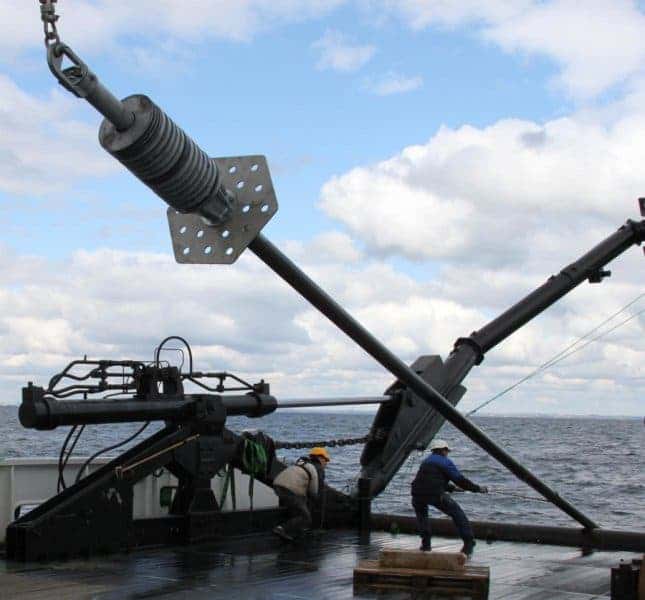Scientists at the Center for Geomicrobiology at the Aarhus University, Denmark, have sequenced the genome of several bugs living in the subsurface seabed in Aarhus Bay. They found that because of the extreme energy deprivation, evolution can slow down or even grind to a halt in such environments.

Image credits Nils Risgaard-Petersen.
For the most part, microorganisms are notoriously prone to proliferate. This huge speed of multiplication, combined with selective and accidental mutational processes, makes them hugely adaptable and quick to differentiate into new strains, or speciate.
That is, unless they live in the subsurface seabed, according to Danish researchers.
By analyzing sediment cores reaching back up to 10,000 years ago (roughly the end of the last glaciation) taken from Aarhus Bay, researchers at the Center for Geomicrobiology at Aarhus University, Denmark, have found that the extreme environments at that depth can “arrest” evolution for millennia under layers of mud.
Old folks
The team was able to show that microorganisms living in the deep seabed have generation times (the gap between two successive generations) of up to 100 years. Which is a lot even by human standards. But it’s immense when you consider that bacteria in your gut, for example, have generation times of about 20 minutes. A low rate of division also means that these bugs are relatively genetically stable over time.
“This means that these buried microorganisms presumably have a very low adaptability, unlike the microbial life that otherwise surrounds us in our environment” says Kasper U. Kjeldsen, associate professor at the Center for Geomicrobiology, who participated in the research project.
It probably comes down to harsh environmental conditions (especially pressure) but most of all, the team says, to scarce energy sources. Simply put, the bacteria have nothing to eat at that depth so they don’t do much and they reaaaally think about the state the economy’s in before they divide. Their low rate of division doesn’t just make them slow to adapt but also conserves their genetic material — essentially “freezing” their species’ evolution in time.
So why do these bugs live down here if it’s so spectacularly bad for them? Well, they may not have a say in the matter. Genetic sequencing of these populations shows that they’re made up of the hardier species which inhabited the seafloor over the last thousands of years and were subsequently buried under sediment. Unlike the majority of today’s surface dwellers, they can survive deep burial, although the scientists don’t know exactly why, only that it’s a skill they had before burial.
“Here we use [genetic] sequencing to explore changes of microbial communities during burial and isolation from the surface […] and identify a small core set of mostly uncultured bacteria and archaea that is present throughout the sediment column. These persisting populations constitute a small fraction of the entire community at the surface but become predominant in the subsurface,” the team writes.
“Our results indicate that subsurface microbial communities predominantly assemble by selective survival of taxa able to persist under extreme energy limitation [and] that the ability of subseafloor microbes to subsist in the energy-deprived deep biosphere is not acquired during burial but that these microbes were already capable of living in this unique environment.”
The researchers hope that their new findings could help us better understand and reconstruct past environmental and climatic conditions based on analysis of the microbial species composition in deep marine sediment cores.
The full paper “Microbial community assembly and evolution in subseafloor sediment” has been published in the journal Proceedings of the National Academy of Sciences.
Was this helpful?



